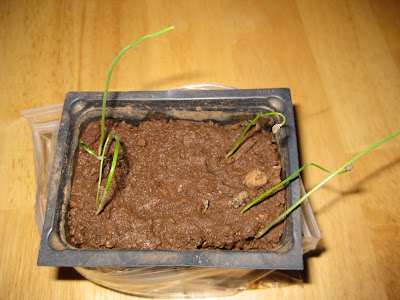- One is that potting soil often contains a lot of shredded wood which invites fungus gnats to make their abode in your potting soil. The gnats also munch on nice little roots sometimes killing the seedlings. Dirt from outside is usually denser, has less wood particulate for the fungus and gnats to grow, and the dirt seems to deter the fungus gnats.
- I have been concerned for some time about the difference in soil environment between the commercial seed starting soil and the real soil that the plants will be growing in the garden. The idea behind potting soil is that it provides the optimal conditions that will allow more seeds to sprout and is sterile so the seedlings will avoid soil borne diseases and be healthier. In the case like mine where I save and start my own seeds I am more concerned about them growing well in my soil. What if the potting soil encourages the growth of certain seedlings over others that may thrive better in my real soil? On occasions in the past where I used commercial seed, I have noticed that many commercial seeds that are typically started early in the season in potting soil don't sprout readily in the open garden soil. I am afraid that these seeds are bred and conditioned to only grow well in the cushy potting soil conditions and are not hardy enough or adapted well enough to grow and survive if planted directly in the ground. Why not plant the seeds in real dirt and let natural selection proceed eliminating the plants that are less tolerant of fusarium wilt and soil borne diseases? Over a few generations of seed saving, the plants should improve their ability to grow in your soil and adapt more perfectly to your real conditions. Starting seeds in sterile potting soil may confound the selection process.
- Dirt is Free! Why spend lots of money on potting soil? This was the fundamental changing point for me. I got tired of the high prices for potting soil when similar and possibly better long-term generational results might be obtained with just plain old dirt from my yard.
Typically it is a good idea to chop onions back to an inch or two, like these below, until you harden them off and plant them outside in the garden.





No comments:
Post a Comment